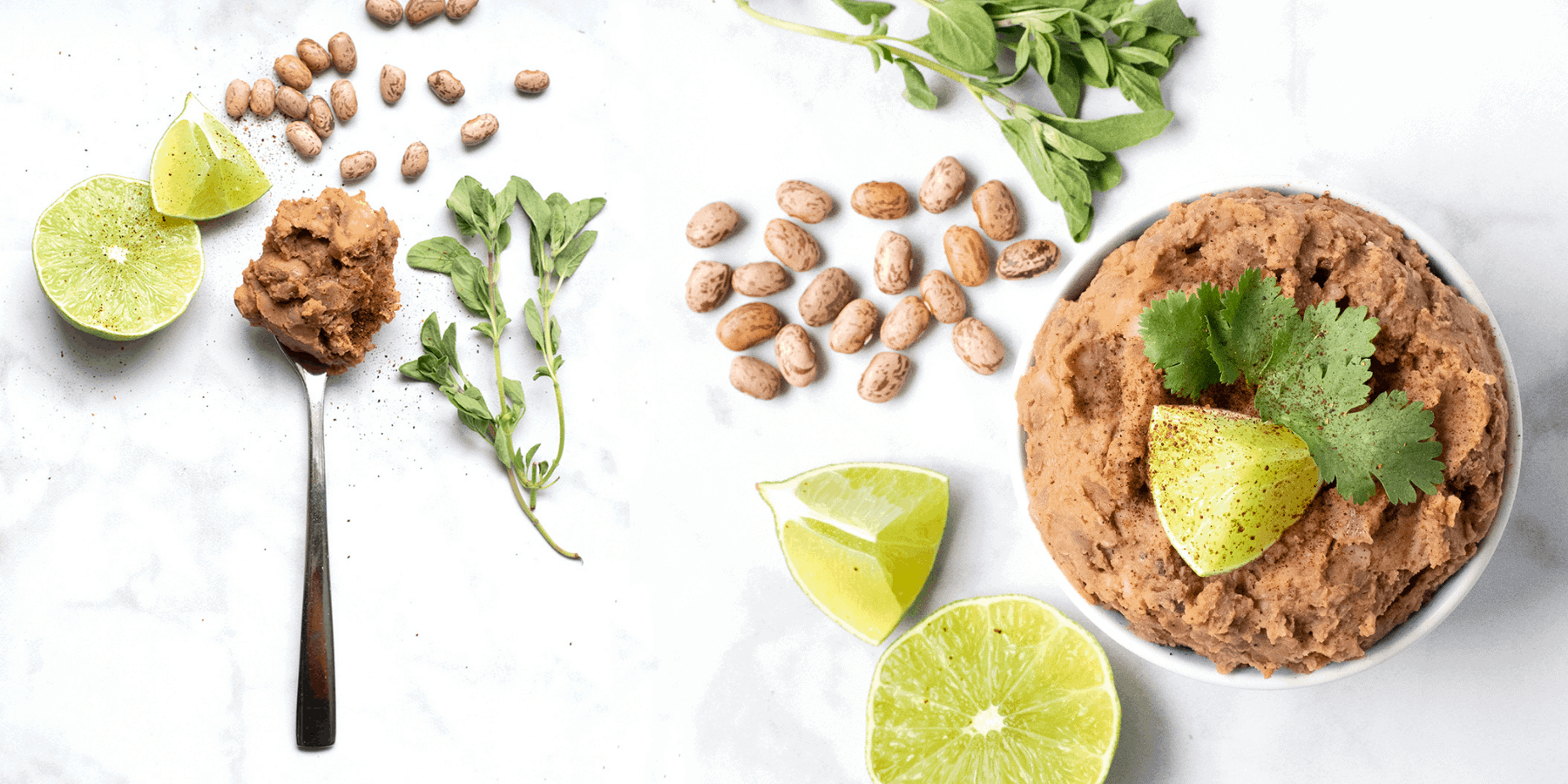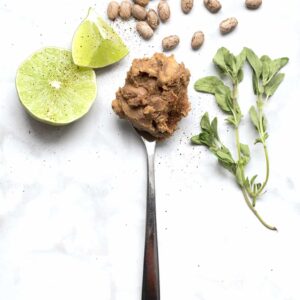This Vegan Refried Beans: Learn How to Make Homemade Refried Beans from Scratch includes affiliate links. When I find a great product or service, I like to share it with my readers. Sometimes I use affiliate links so I can earn a commission for my recommendations. Thank you for your support!
Vegan Refried Beans: Learn How to Make Homemade Refried Beans from Scratch
This Vegan Refried Beans recipe will fill your kitchen with wonderful aromas. Homemade refried beans are easy to make and a great side dish or addition to vegan tostadas or vegan tacos.
What Are Refried Beans?
Mexican refried beans are a staple in this wonderfully flavorful cuisine. They’re traditionally made with pinto beans, but recipes for refried black beans and refried kidney beans are also popular. The beans are slow-cooked with aromatic ingredients like onions, garlic and herbs until they become soft. They’re then mashed into a thick paste and served as a side or a component of a larger dish – like tostados or tacos.


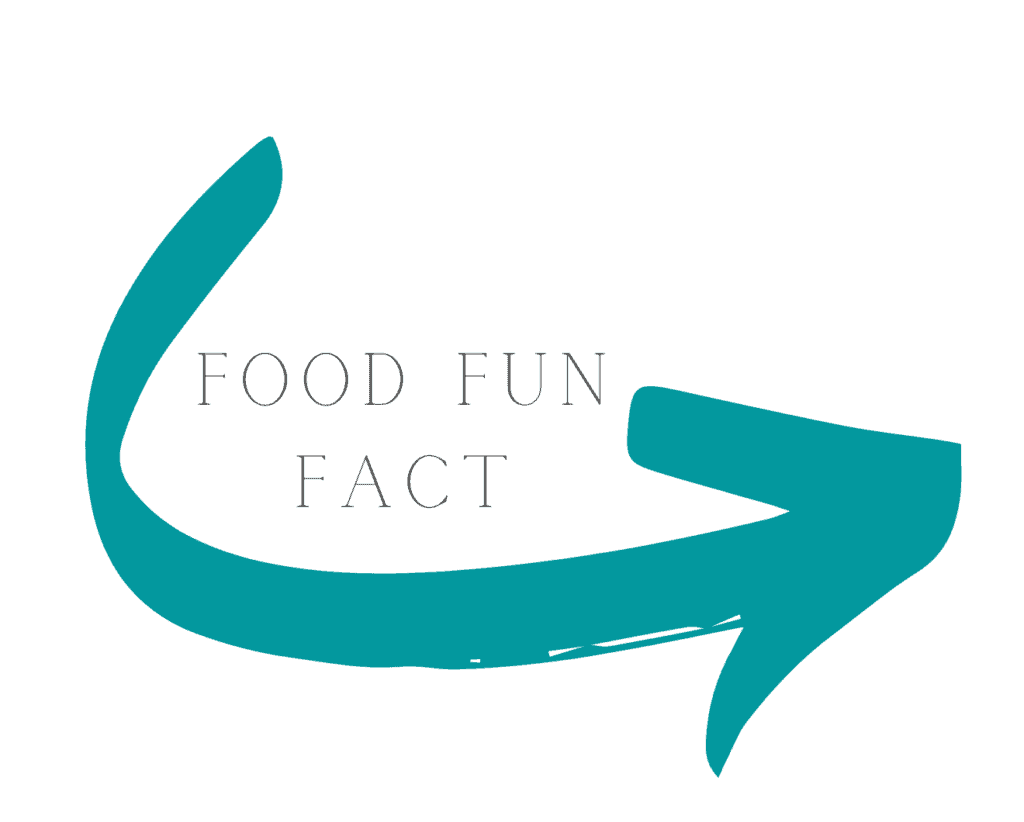
Refried beans aren’t actually twice fried. The name refried beans comes from the Spanish phrase frijoles refritos which translates to well-fried beans. In this recipe, the beans aren’t fried at all. They’re simply mashed.
Choosing Pinto Beans for this Vegan Refried Beans Recipe
Before I embraced plant-based cooking, I ate beans on occasion. So much so that, for me, the word beans was synonymous with black beans. If I ate pinto beans, it was because I was at a restaurant or I needed a “filler bean” (i.e. I ran out of black beans) to finish a pot of chili.

I have since become smitten with pinto beans. Honestly, all it took was putting these speckled darlings in a crockpot with some bay leaves and letting them slow cook all day. The aroma was intoxicating. There’s also a reason that pinto beans are the desired bean for refried beans. When cooked, they’re soft and buttery – the perfect candidate to be mashed into protein-rich perfection.
Are Refried Beans Vegan?
Traditionally, no. Authentic refried beans recipes typically include lard, an animal-based cooking fat. If I let traditional preparation stop me though, I’d have very few recognizable recipes on my vegan blog. I maintain that traditional preparations can be remade with plant-based ingredients and taste every bit as good as the original. Vegan refried beans are no exception.
How to Make Vegan Refried Beans from Scratch
I made these vegan refried beans with dried pinto beans. I soaked them overnight to: (a) speed up the cooking time, and (b) make them easier to digest. The next morning, I drained the soaked beans and added them to my Multi-Food Cooker (my beloved slow cooker on steroids) with 1 tbsp olive oil, 1 tsp salt and 2 bay leaves and added enough water to cover the beans by ~2 inches. Then I slow-cooked them for 6-8 hours.
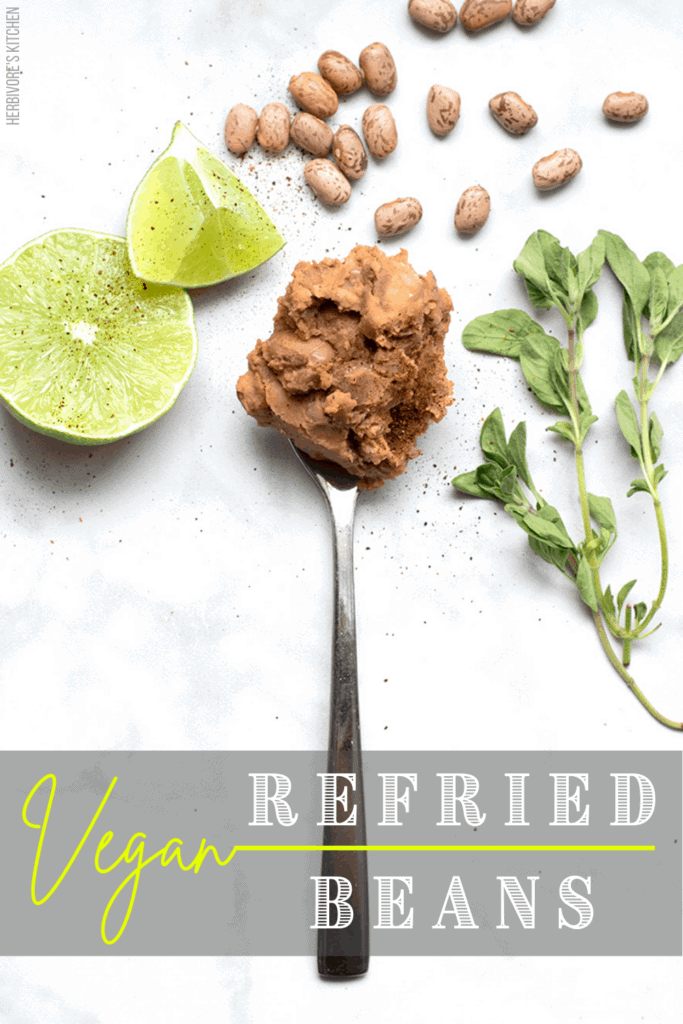

After this relatively hands-off step, I sautéed yellow onion and added some herbs and spices. Then I added the beans and mashed them to perfection with potato masher. I finished the beans with some fresh lime juice, salt and pepper and then topped them with cilantro and a sprinkle of chili powder.
My trick for these vegan refried beans though, is to sauté a tbsp of tomato paste with the onions and garlic. This ingredient isn’t traditional, but tomato paste (especially when sautéed) lends richness and depth of flavor. It’s my answer to a traditional refried bean recipe’s use of lard.
Do You Need to Soak Dried Beans Overnight?
There are a lot of conflicting opinions online about whether to pre-soak dried beans. I’m in my kitchen all the time and meals are often planned well in advance. Because of this, it’s not really a chore for me to take the step to soak beans the night before. I know that many home cooks are balancing food preparation with jobs and kids and life in general, so the idea pre-soaking beans might be overwhelming. To make this recipe accessible to all, I did some research about pre-soaking beans.
As it turns out, there are some as-good-as soaking alternatives. If you forgot to pre-soak your beans, you can also:
- Quick Soak Your Beans. To do this, rinse the dried beans and add them to a pot of with 1 tsp of salt. Add water to cover the beans by ~2 inches, then bring to a boil. After a boil has been reached, turn off the heat and let the beans sit for 1 hour.
- Skip Soaking Altogether. Pre-soaking can be skipped, but it will add cook time to this recipe. Usually 1-1 ½ hours. If you’re slow-cooking your beans in a crockpot though, it might not matter.
- Swap Out Dried Beans for Canned Beans. You can always opt to use canned pinto beans. Make sure you drain and rinse them out of the can. Then add them to a sauce pot and cover them with water. Bring to a simmer and cook until the beans are softened. About 25-30 minutes.
Refried Beans: Carbs or Protein?
When I was researching this blog post, I learned that one of the most frequently searched questions is: Are refried beans carbs? Given its popularity, I decided I’d address it.


Yes, beans are carbohydrates. One cup of pinto beans contains about 45 grams of carbs. I’m personally not a carb avoider, especially when they’re unrefined carbohydrates and they contain so many other benefits. Pinto beans, for example, also have 15 grams of protein and 15 grams of fiber per cup. They’re also packed with nutrients like thiamine, iron, magnesium, phosphorus and potassium.
How to Reheat Homemade Refried Beans
Reheating these vegan refried beans is easy. All you need to do is add some water to slightly reconstitute this dish. Then heat the beans up in a sauce pan or in the microwave. Refried beans will keep in the refrigerator for several days. They can also be frozen in an airtight container for later use.
What’s in My Kitchen to Make Vegan Refried Beans Easier?
Want to know what tools and resources I keep on hand to make my vegan cooking even easier? Here’s a short list of what helped me create this blog post and recipe. For the complete list, visit my Shop where you can find the kitchen gadgets I like as well as a list of books that I recommend.
KitchenAid Multi Cooker
A couple of years ago, I replaced my traditional crockpot with this multi cooker. I love this thing. It has settings for sautéing, simmering, braising, boiling and warming (among others). It’s one-pot, slow cooking at its finest. I sauté my onions and garlic, then bring my broth to a boil, reduce it to a simmer and low, slow cook it all afternoon. All in one device.
Potato Masher
Nothing fancy to see here! This simple kitchen tool serves me well in several of my vegan recipes. Use it in my Mango Guacamole Recipe, Garlic Smashed Potatoes with Chimichurri Sauce or, of course, to make Creamy Vegan Mashed Potatoes.
Garlic Peeler
This garlic peeler is a simple silicon tube. Despite its simple design, it skillfully removes even the toughest of garlic skins. I’m so much happier not peeling garlic cloves with my fingernails. I’m pretty sure I’ll collectively get at least a day of my life back because of this device.
Garlic Press
I’ve read a dozen posts about why you shouldn’t use a garlic press. One of them actually suggested that they take up valuable kitchen space. I mean, I guess if you have a tiny kitchen you might have to make those choices. They’re smaller than a can opener. I love mine. I hate, hate, hate mincing garlic.
A Really, Really Good Chef’s Knife
No, that’s not the brand. It’s just the idea! But, I own this set of Global™ knives and They’re some of my most prized possessions in the kitchen. This set is universally well-rated for the at-home chef and will get you a good, solid set of knives without totally breaking the bank.
Vegan Refried Beans
Ingredients
- 1 1/2 cup dried pinto beans soaked overnight; see Recipe Notes for other soaking methods or to use canned pinto beans
- 2 bay leaves
- 1 tsp salt
- 3 tbsp extra virgin olive oil divided
- 1/2 yellow onion finely diced
- 2 garlic cloves minced
- 1 tsp dried oregano
- 1 tsp cumin
- 1 tsp chili powder
- 1 tbsp tomato paste
- 1/2 cup water
- 1 tbsp fresh lime juice
- salt & pepper to taste
- cilantro as optional garnish
- lime wedges as optional garnish
- chili powder as optional seasoning
Instructions
- Add the soaked pinto beans to a slow cooker cover with water. The water level should be about 2 inches above the top of the beans. Add the bay leaves, 1 tsp salt and 1 tbsp of extra virgin olive oil and bring to a low simmer. Cook until the beans are soft. About 6-8 hours. Check the slow cooker occasionally and add more water if necessary. For stove top method or using canned pinto beans see Recipe Notes.
- Drain the pinto beans, remove the bay leaves and set aside.
- Add 2 tbsp extra virgin olive oil to a large stock pot. Heat the pot on medium until the oil is shimmering. Add the onions and salt and sauté until the onions begin to brown. Add the garlic and sauté 1-2 minutes more.
- Add the tomato paste and continue to sauté until the tomato becomes a dark red. About 2 minutes.
- Add the water to deglaze the pot. Then add the pinto beans and bring to a simmer. Allow the beans to simmer for ~10 minutes.
- Use a potato masher to break down the beans. Stir in the lime juice and season with salt & pepper to taste.
- Garnish with cilantro, lime wedges and chili powder as desired.
Notes
- Quick Soak Your Beans. To do this, rinse the dried beans and add them to a pot of with 1 tsp of salt. Add water to cover the beans by ~2 inches, then bring to a boil. After a boil has been reached, turn off the heat and let the beans sit for 1 hour. Drain and rinse the beans, then return them to the pot and add water. The water level should be about 2 inches above the beans. Then add 1 tbsp extra virgin olive oil and 2 bay leaves. Simmer on the stove top for ~2 hours or until the beans are soft. Check the pot occasionally and add more water as necessary.
- Skip Soaking Altogether. Pre-soaking can be skipped, but it will add cook time to this recipe. Usually 1-1 ½ hours. If you’re slow-cooking your beans in a crock pot though, it might not matter. To use this method, rinse the dried beans and add them to a slow cooker. Add water until the water level is ~2 inches. Add 1 tbsp extra virgin olive oil and 2 bay leaves. Slow cook the beans for 8-10 hours. Check the beans occasionally and add more water as necessary.
- Swap Out Dried Beans for Canned Beans. You can always opt to use canned pinto beans. Make sure you drain and rinse them out of the can. Then add them to a sauce pot and cover them with water. Add 1 tbsp extra virgin olive oil and 2 bay leaves. Bring to a simmer and cook until the beans are softened. About 25-30 minutes.
About Herbivore’s Kitchen
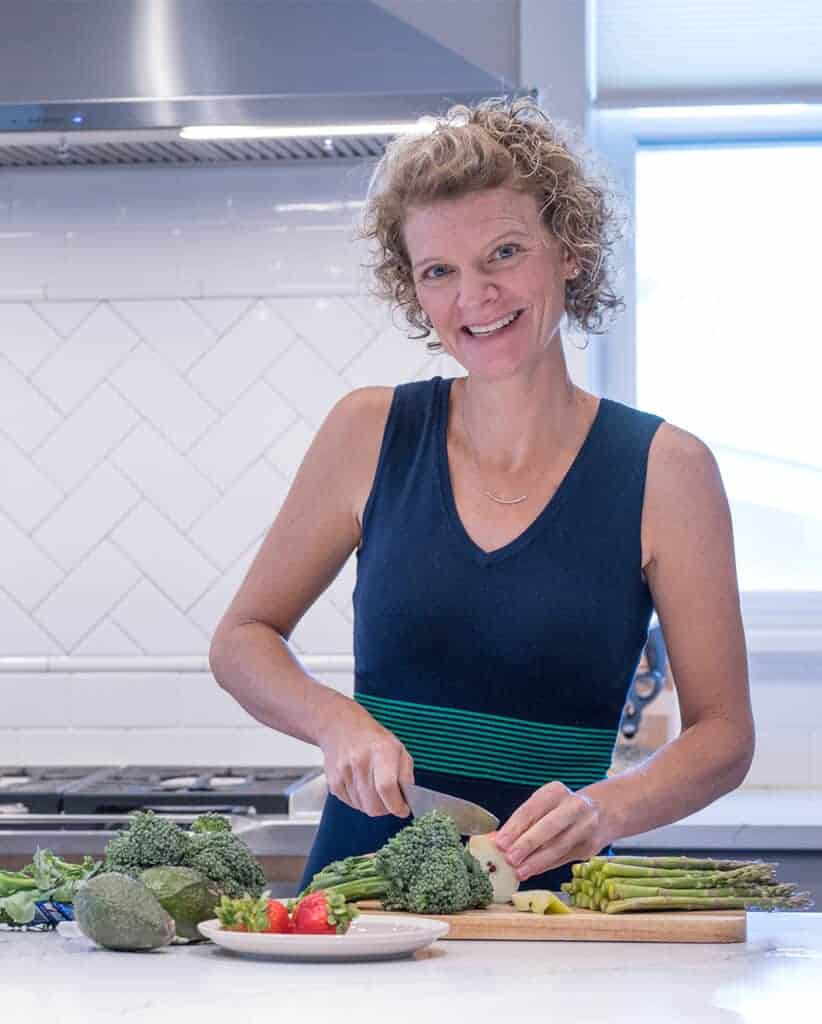
Herbivore’s Kitchen is a blog run by me, a plant-based home chef and aspiring food photographer. I switched my and my family’s diet to a plant-based diet after learning about the health benefits of going vegan. Making this change has prompted a variety of food and holistic-lifestyle related questions that I explore through this blog. I talk about how to pick and prepare the most nutritious foods, to how to reduce waste at home, to how to live a more sustainable lifestyle while on the road.
